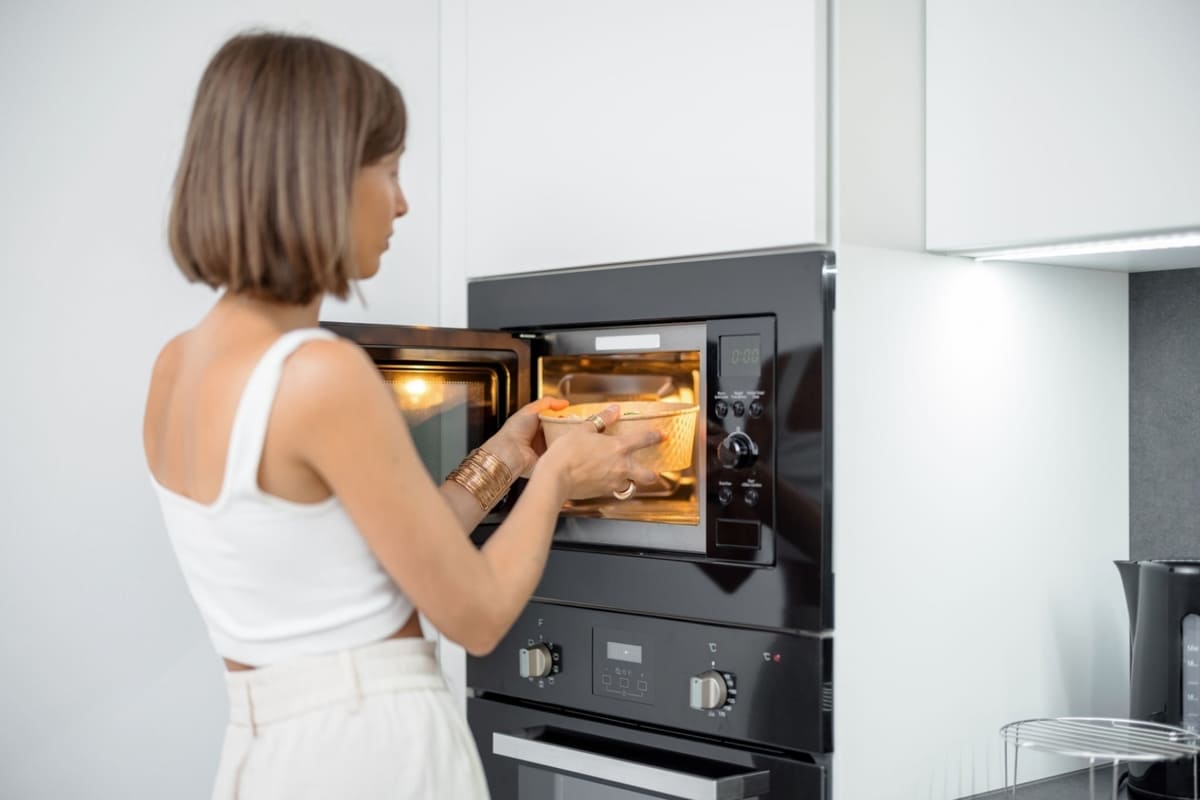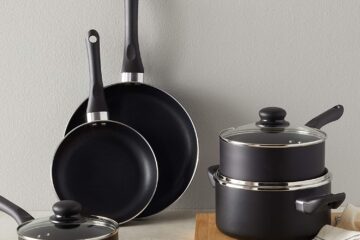Microwave cooking has revolutionized the way we prepare food, and frozen potstickers are no exception. This article will provide you with a step-by-step guide on how to cook frozen potstickers in the microwave. We will also cover the advantages of this method, tips for choosing the right potstickers, preparing them, and serving them. Additionally, we will compare microwave cooking with other methods, and provide you with tips, tricks, and common mistakes to avoid.
Advantages of Cooking Frozen Potstickers in the Microwave
- Quick and easy – Cooking frozen potstickers in the microwave is fast and convenient. It requires no additional cooking tools, making it an excellent option for busy individuals or those who do not have access to a stove.
- No need for additional cooking tools – All you need is a microwave-safe plate and a microwave oven.
- Saves time and energy – Cooking potstickers in the microwave takes less time than other cooking methods, and saves energy as well.
Choosing the Right Potstickers
- Various types of frozen potstickers – There are many different types of frozen potstickers available in the market. You can choose from chicken, pork, vegetable, or shrimp potstickers, among others.
- Differences in cooking time and method – Different brands and types of potstickers may require varying cooking times and methods. It is essential to read the instructions on the package carefully.
- Tips for selecting the best potstickers for the microwave – Look for potstickers that are explicitly labeled as microwave-safe. These are designed to cook evenly and prevent the filling from drying out.
Preparing the Potstickers
- Defrosting the potstickers – Before cooking, it is essential to defrost the potstickers. You can do this by placing them in the refrigerator overnight or by using the defrost setting on your microwave.
- Preparing the microwave-safe plate – Place a paper towel on the plate to absorb any excess moisture, and lightly coat it with cooking spray to prevent sticking.
- Placing the potstickers on the plate – Arrange the potstickers on the plate, leaving space between them to ensure even cooking.
Cooking Frozen Potstickers in the Microwave
- Setting the time and power level – The cooking time and power level will depend on the wattage of your microwave and the type of potstickers you are cooking. A general rule of thumb is to cook the potstickers on high power for 3 to 5 minutes.
- Checking the potstickers during cooking – Check the potstickers periodically during cooking to prevent overcooking or undercooking. You can do this by gently pressing the filling with a fork or toothpick to check if it is hot all the way through.
- Turning the potstickers over halfway through cooking – Turning the potstickers over halfway through cooking ensures that they cook evenly on both sides.
- Letting the potstickers rest – After cooking, let the potstickers rest for a minute or two to allow the filling to cool slightly and prevent burns.
Serving the Potstickers
- Plating the potstickers – Transfer the potstickers to a serving dish, and arrange them in a single layer to prevent them from sticking together.
- Pairing the potstickers with dipping sauce – Serve the potstickers with your favorite dipping sauce, such as soy sauce, sweet chili sauce, or peanut sauce.
- Garnishing the potstickers – Add a sprinkle of chopped green onions or sesame seeds for added flavor and presentation.
Alternative Methods of Cooking Frozen Potstickers
If you don’t have a microwave or prefer not to use it, there are other ways to cook frozen potstickers. Here are some popular methods:
-
Pan-frying:
Pan-frying is a popular method for cooking potstickers. It gives them a crispy texture and a savory flavor. Here are the steps to follow:
- Heat some oil in a non-stick pan over medium-high heat. You can use any oil with a high smoke point, such as canola, vegetable, or peanut oil.
- Place the frozen potstickers in the pan, leaving some space between them.
- Let them cook for 2-3 minutes or until the bottom is golden brown.
- Add some water to the pan, enough to cover the bottom of the potstickers.
- Cover the pan with a lid and let the potstickers steam for 5-7 minutes or until the water has evaporated.
- Remove the lid and let the potstickers cook for an additional 1-2 minutes until the bottom is crispy.
- Serve hot with your favorite dipping sauce.
Pan-frying is a great option if you want to add some crunch and texture to your potstickers. However, it does require some oil and can be a bit messy.
-
Boiling:
Boiling is a simple and easy way to cook potstickers. It’s also a healthy option as it doesn’t require any oil. Here’s how to do it:
- Bring a large pot of water to a boil.
- Add the frozen potstickers to the water, making sure they’re fully submerged.
- Let them cook for 5-7 minutes or until they float to the surface.
- Remove the potstickers from the water with a slotted spoon and place them on a plate.
- Serve hot with your favorite dipping sauce.
Boiling is a great option if you want to avoid using oil and want a healthier option. However, the texture of the potstickers may not be as crispy as pan-frying or baking.
-
Steaming:
Steaming is a gentle way to cook potstickers, preserving their flavor and texture. Here’s how to do it:
- Fill a pot with a couple of inches of water and bring it to a boil.
- Line a steamer basket with parchment paper or cabbage leaves.
- Place the frozen potstickers in the steamer basket, making sure they’re not touching each other.
- Place the steamer basket on top of the pot, making sure the water doesn’t touch the potstickers.
- Cover the pot with a lid and let the potstickers steam for 10-12 minutes.
- Remove the potstickers from the steamer basket and place them on a plate.
- Serve hot with your favorite dipping sauce.
Steaming is a great option if you want to preserve the flavor and texture of the potstickers. However, it does require a steamer basket and may take longer than other methods.
-
Baking:
Baking is a convenient way to cook potstickers as you can cook a large batch at once. Here’s how to do it:
- Preheat your oven to 375°F.
- Line a baking sheet with parchment paper.
- Place the frozen potstickers on the baking sheet, leaving some space between them.
- Brush the potstickers with some oil to give them a crispy texture.
- Bake the potstickers for 18-20 minutes or until they’re golden brown and crispy.
- Remove the potstickers from the oven and place them on a plate.
- Serve hot with your favorite dipping sauce.
Baking is a healthier alternative to pan-frying because you don’t need to use oil to cook the potstickers. Moreover, baking allows you to cook a large number of potstickers at once, which is perfect for a party or a gathering.
However, baking takes longer than other cooking methods, and the potstickers may not be as crispy as they are when pan-fried. Also, you need to be careful not to overcook the potstickers, as they may become dry and rubbery.
Comparison of Microwave Cooking with Other Methods
Microwave cooking is a quick and easy way to cook frozen potstickers, but how does it compare to other cooking methods? Let’s take a look:
Time and energy consumption
Microwave cooking is the fastest cooking method, taking only 3-5 minutes. Pan-frying takes about 8-10 minutes, while boiling and steaming take about 10-12 minutes. Baking takes the longest, about 18-20 minutes. Therefore, if you’re in a rush, microwave cooking is the best option.
In terms of energy consumption, microwave cooking is the most energy-efficient because it uses less energy than other cooking methods. On the other hand, pan-frying uses the most energy because you need to heat the oil in the pan.
Taste and texture
Pan-frying provides the crispiest and most flavorful potstickers because of the oil used. However, the potstickers may be a bit greasy.
Boiling and steaming provide a healthier option because they don’t require oil, but the potstickers may be a bit softer and less flavorful.
Microwave cooking provides a balance between speed and taste. The potstickers may not be as crispy as pan-fried, but they’re still tasty and flavorful. Moreover, microwave cooking allows you to cook the potstickers without adding any extra oil.
Baking provides a healthy and convenient option to cook a large number of potstickers at once. However, the potstickers may not be as crispy as pan-fried, and the texture may be a bit dry.
Pros and cons of each method
Here are the pros and cons of each method:
Microwave cooking:
Pros: Quick, easy, energy-efficient, and healthy.
Cons: Potstickers may not be as crispy as pan-fried, and the texture may be a bit soft.
Pan-frying:
Pros: Crispy, flavorful, and easy to control.
Cons: Time-consuming, requires oil, and may be a bit greasy.
Boiling/steaming:
Pros: Healthy, doesn’t require oil, and can cook a large number of potstickers at once.
Cons: Potstickers may be a bit soft and less flavorful.
Baking:
Pros: Healthy, convenient for cooking a large batch, and doesn’t require oil.
Cons: Potstickers may not be as crispy as pan-fried, and the texture may be a bit dry.
Tips and Tricks for Microwave Cooking
Here are some tips and tricks to help you get the best results when cooking frozen potstickers in the microwave:
Choosing the right microwave power level:
The power level of your microwave can affect the cooking time and the texture of your potstickers. Use the high power setting for the best results.
Adjusting the cooking time for different brands and types of potstickers:
Different brands and types of potstickers may require different cooking times. Follow the instructions on the packaging, but be prepared to adjust the time based on your microwave’s power.
Avoiding overcooking or undercooking:
To avoid overcooking or undercooking your potstickers, start with the lowest cooking time recommended and add more time if needed.
Common Mistakes to Avoid
Cooking frozen potstickers in the microwave can be a quick and easy way to enjoy a delicious meal. However, there are some common mistakes that people make that can affect the taste and texture of the potstickers. Here are some of the most common mistakes to avoid:
- Not defrosting the potstickers: One of the most important steps when cooking frozen potstickers in the microwave is to defrost them properly. If you don’t defrost them, they won’t cook evenly and may end up being overcooked on the outside and undercooked on the inside. To defrost the potstickers, you can leave them at room temperature for 10-15 minutes or defrost them in the microwave for 1-2 minutes on the defrost setting.
- Overcooking or undercooking: Cooking potstickers in the microwave can be tricky, as you want to make sure they’re cooked all the way through without overcooking them. Follow the cooking instructions on the package and check the potstickers frequently to make sure they’re cooking evenly. If you overcook them, they may become tough and chewy, while undercooked potstickers can be soggy and doughy.
- Neglecting to turn the potstickers over during cooking: To ensure that the potstickers cook evenly, it’s important to turn them over halfway through the cooking time. If you don’t do this, one side may be overcooked while the other side is undercooked.
Conclusion
In conclusion, cooking frozen potstickers in the microwave is an easy and convenient way to enjoy this delicious dish. By following the tips and tricks outlined in this article, you can cook your potstickers to perfection in just a few minutes. However, it’s important to avoid common mistakes such as overcooking or undercooking the potstickers, neglecting to turn them over during cooking, and not defrosting them properly.
By selecting the right potstickers, preparing them correctly, and using the appropriate cooking method, you can enjoy a tasty and satisfying meal that’s perfect for any occasion. So go ahead and give it a try, and impress your friends and family with your newfound culinary skills!



![Samsung Microwave Oven Errors/Faults | C-Codes [Solved] samsung microwave oven errorsfaults c-codes](https://thekitcheneye.com/wp-content/uploads/2023/04/samsung-microwave-oven-errorsfaults-c-codes-360x240.jpg)
